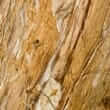Background
- According to the U.S. Department of Agriculture, Melaleuca leucadendron and Melaleuca quinquenervia refer to the same plant.
- Cajeput (Melaleuca quinquenervia leucadendron, Melaleuca leucadendron) is a tree native to Australia. Cajeput oil is extracted from the leaves and twigs of the plant. Cajeput leaves may be useful for high blood pressure, herpes simplex, and Helicobacter pylori inhibition. They may also have hypoglycemic effects and may be able to lower blood sugar levels. However, currently there is not enough scientific evidence in humans to support the use of cajeput oil for any indication.
References
Natural Standard developed the above evidence-based information based on a thorough systematic review of the available scientific articles. For comprehensive information about alternative and complementary therapies on the professional level, go to . Selected references are listed below.
- Amer A, Mehlhorn H. Repellency effect of forty-one essential oils against Aedes, Anopheles, and Culex mosquitoes. Parasitol Res 2006;99(4):478-490.
View Abstract - Bhamarapravati S, Pendland SL, Mahady GB. Extracts of spice and food plants from Thai traditional medicine inhibit the growth of the human carcinogen Helicobacter pylori. In Vivo 2003;17(6):541-544.
View Abstract - El Toumy SA, Marzouk MS, Moharram FA, et al. Flavonoids of Melaleuca quinquenervia. Pharmazie 2001;56(1):94-95.
View Abstract - Lee CK, Chang MH. Four new triterpenes from the heartwood of melaleuca leucadendron. J Nat Prod 1999;62(7):1003-1005.
View Abstract - Lee TH, Wang GJ, Lee CK, et al. Inhibitory effects of glycosides from the leaves of Melaleuca quinquenervia on vascular contraction of rats. Planta Med 2002;68(6):492-496.
View Abstract - Lockhart C, Austin DF, Aumen NG. Water Level Effects on Growth of Melaleuca Seedlings from Lake Okeechobee (Florida, USA) Littoral Zone. Environ.Manage 1999;23(4):507-518.
View Abstract - Moharram FA, Marzouk MS, El Toumy SA, et al. Polyphenols of Melaleuca quinquenervia leaves--pharmacological studies of grandinin. Phytother Res 2003;17(7):767-773.
View Abstract - Mueller RS, Bettenay SV, Tideman L. Aero-allergens in canine atopic dermatitis in southeastern Australia based on 1000 intradermal skin tests. Aust Vet J 2000;78(6):392-399.
View Abstract - Muller JF, Hawker DW, McLachlan MS, et al. PAHs, PCDD/Fs, PCBs and HCB in leaves from Brisbane, Australia. Chemosphere 2001;43(4-7):507-515.
View Abstract - Nawawi A, Nakamura N, Hattori M, et al. Inhibitory effects of Indonesian medicinal plants on the infection of herpes simplex virus type 1. Phytother Res 1999;13(1):37-41.
View Abstract - Oelrichs PB, MacLeod JK, Seawright AA, et al. Isolation and identification of the toxic peptides from Lophyrotoma zonalis (Pergidae) sawfly larvae. Toxicon 2001;39(12):1933-1936.
View Abstract - Quimby PC Jr., DeLoach CJ, Wineriter SA, et al. Biological control of weeds: research by the United States Department of Agriculture-Agricultural Research Service: selected case studies. Pest Manag Sci 2003;59(6-7):671-680.
View Abstract - Stablein JJ, Bucholtz GA, Lockey RF. Melaleuca tree and respiratory disease. Ann Allergy Asthma Immunol 2002;89(5):523-530.
View Abstract - Subehan Usia T, Iwata H, Kadota S, et al. Mechanism-based inhibition of CYP3A4 and CYP2D6 by Indonesian medicinal plants. J Ethnopharmacol 5-24-2006;105(3):449-455.
View Abstract - Wheeler GS, Massey LM, Southwell IA. Dietary influences on terpenoids sequestered by the biological control agent Oxyops vitiosa: effect of plant volatiles from different Melaleuca quinquenervia chemotypes and laboratory host species. J Chem Ecol 2003;29(1):189-208.
View Abstract







